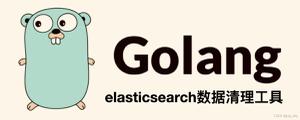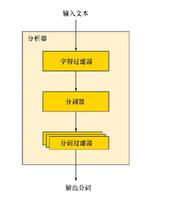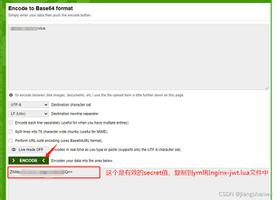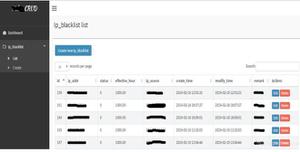ElasticSearch Nest。术语聚合及其迭代的更好代码
我想获取给定期间内唯一数字用户ID的列表。
假设字段为userId,时间字段为startTime,我成功获得如下结果;
HashSet<int> hashUserIdList= new HashSet<int>(); // guarantees to store unique userIds.// Step 1. get unique number of userIds
var total = client.Search<Log>(s => s
.Query(q => q
.DateRange(c => c.Field(p => p.startTime)
.GreaterThan(FixedDate)))
.Aggregations(a => a
.Cardinality("userId_cardinality", c => c
.Field("userId"))))
.Aggs.Cardinality("userId_cardinality");
int totalCount = (int)total.Value;
// Step 2. get unique userId values by Terms aggregation.
var response = client.Search<Log>(s => s
.Source(source => source.Includes(inc => inc.Field("userId")))
.Query(q => q
.DateRange(c => c.Field(p => p.startTime)
.GreaterThan(FixedDate)))
.Aggregations(a => a
.Terms("userId_terms", c => c
.Field("userId").Size(totalCount))))
.Aggs.Terms("userId_terms");
// Step 3. store unique userIds to HashSet.
foreach (var element in response.Buckets)
{
hashUserIdList.Add(int.Parse(element.Key));
}
它 可以工作,
但效率不高,因为(1)totalCount首先获取,并且(2)它定义Size(totalCount)由于存储桶溢出(如果结果有成千上万个),可能导致500个服务器错误。
以某种foreach方式进行迭代会很好,但是我无法使它们按大小迭代100。我在这里放了From/ Size或Skip/
Take,但是返回值不可靠。
如何正确编码?
回答:
对于某些集合,此方法可能是可行的,但需要注意以下几点:
- 基数聚合使用HyperLogLog ++算法来 近似 基数。对于低基数字段,此近似值可能完全准确,而对于高基数字段,则近似值不那么准确。
- 术语对于 许多 术语而言,聚合可能在计算上很昂贵,因为每个存储桶都需要构建在内存中,然后序列化以响应。
您可能可以跳过基数汇总来获取大小,而只需将其int.MaxValue作为术语汇总的大小即可。在速度方面效率较低的另一种方法是滚动浏览范围内的所有文档,使用源过滤器仅返回您感兴趣的字段。我希望使用Scroll方法可以减轻群集的压力,但我建议您监视您采用的任何方法。
这是对Stack Overflow数据集(2016年6月,IIRC)上这两种方法的比较,研究了两年前的今天和一年前的今天的独特提问者。
术语汇总
void Main(){
var pool = new SingleNodeConnectionPool(new Uri("http://localhost:9200"));
var connectionSettings = new ConnectionSettings(pool)
.MapDefaultTypeIndices(d => d
.Add(typeof(Question), NDC.StackOverflowIndex)
);
var client = new ElasticClient(connectionSettings);
var twoYearsAgo = DateTime.UtcNow.Date.AddYears(-2);
var yearAgo = DateTime.UtcNow.Date.AddYears(-1);
var searchResponse = client.Search<Question>(s => s
.Size(0)
.Query(q => q
.DateRange(c => c.Field(p => p.CreationDate)
.GreaterThan(twoYearsAgo)
.LessThan(yearAgo)
)
)
.Aggregations(a => a
.Terms("unique_users", c => c
.Field(f => f.OwnerUserId)
.Size(int.MaxValue)
)
)
);
var uniqueOwnerUserIds = searchResponse.Aggs.Terms("unique_users").Buckets.Select(b => b.KeyAsString).ToList();
// 3.83 seconds
// unique question askers: 795352
Console.WriteLine($"unique question askers: {uniqueOwnerUserIds.Count}");
}
滚动API
void Main(){
var pool = new SingleNodeConnectionPool(new Uri("http://localhost:9200"));
var connectionSettings = new ConnectionSettings(pool)
.MapDefaultTypeIndices(d => d
.Add(typeof(Question), NDC.StackOverflowIndex)
);
var client = new ElasticClient(connectionSettings);
var uniqueOwnerUserIds = new HashSet<int>();
var twoYearsAgo = DateTime.UtcNow.Date.AddYears(-2);
var yearAgo = DateTime.UtcNow.Date.AddYears(-1);
var searchResponse = client.Search<Question>(s => s
.Source(sf => sf
.Include(ff => ff
.Field(f => f.OwnerUserId)
)
)
.Size(10000)
.Scroll("1m")
.Query(q => q
.DateRange(c => c
.Field(p => p.CreationDate)
.GreaterThan(twoYearsAgo)
.LessThan(yearAgo)
)
)
);
while (searchResponse.Documents.Any())
{
foreach (var document in searchResponse.Documents)
{
if (document.OwnerUserId.HasValue)
uniqueOwnerUserIds.Add(document.OwnerUserId.Value);
}
searchResponse = client.Scroll<Question>("1m", searchResponse.ScrollId);
}
client.ClearScroll(c => c.ScrollId(searchResponse.ScrollId));
// 91.8 seconds
// unique question askers: 795352
Console.WriteLine($"unique question askers: {uniqueOwnerUserIds.Count}");
}
术语汇总比Scroll API方法快24倍。
以上是 ElasticSearch Nest。术语聚合及其迭代的更好代码 的全部内容, 来源链接: utcz.com/qa/410841.html







